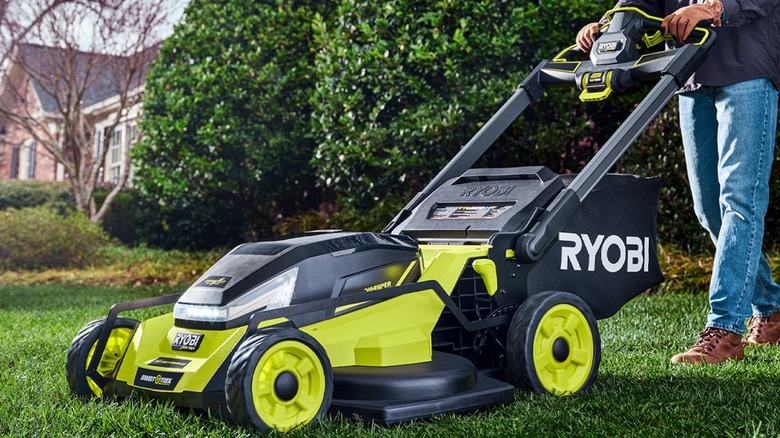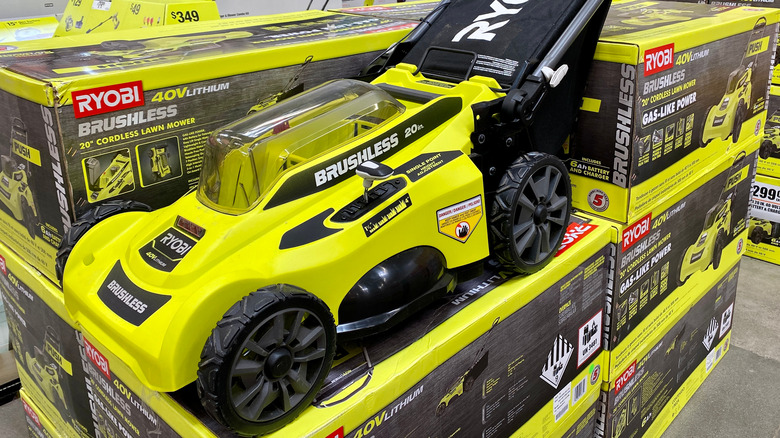Why Your Ryobi Lawn Mower Isn't Cutting Grass (And How To Fix It)
If you're a homeowner, odds are you spend a lot of time tending to your yard. Trimming hedges, pulling weeds, and, of course, mowing the lawn, are likely all regular elements of your yard routine. Depending on the size of your lawn, lawn mowing in particular can prove time-consuming. Thankfully, riding and push mowers, like those from Ryobi — maker of several tools that make yard work a breeze — get the job done in a reasonable amount of time and leave your lawn looking great. At the same time, even the most powerful gas-powered mowers out there from the major brands can encounter some problems.
Even Ryobi's best mowers can encounter issues when it comes to actually mowing the lawn. If it's not the issue of your Ryobi lawn mower not starting up or getting the self-propel functions to work, it's the major problem of the mower not cutting any grass. There are a couple of reasons why this can happen. Aside from the blade itself not spinning, which could come as a result of a myriad of technical issues that could require professional help, the most common is that the mower is blocked. Thick, wet grass can build up inside the mower deck and between the deck and the catcher, preventing the mower from working efficiently or at all.
If this is the situation you're in, it doesn't take much to get out of it or prevent it from happening in the future.
How to get your Ryoki lawn mower working like new again
Removing a blockage from within your Ryobi lawn mower is a pretty straightforward process. All you need to do is locate the blockage and safely remove it by hand. To do this, you'll likely want to remove the catcher from the back of the mower to make the blockage easier to access. It should be noted that you'll want to do this while the mower is off with the battery or safety key removed and with proper protective equipment — gloves, eyewear, and even a mask if you feel so inclined. You should also consult your mower's manual before getting started in case there are additional steps needed.
So, how would one go about preventing a future lawn mower blockage? As mentioned, thick, wet grass is the main culprit in blockage scenarios, so it's best to avoid cutting under such conditions. Wait for the grass to dry out if you can, and raise the deck on your mower to start before going to a lower setting for a second pass. This way, you're not putting your mower through more than it can handle. It's best to keep an eye on your catcher as well, emptying it before it reaches capacity so already cut grass doesn't return to the deck. When done mowing, giving the deck and catcher a thorough cleaning helps tremendously.
At face value, lawn mowing is an easy job, but it can quickly become complicated if your mower acts up. Ideally, a blockage is all you have to deal with, and if that's the case, removing said blockage is next to no trouble at all.

